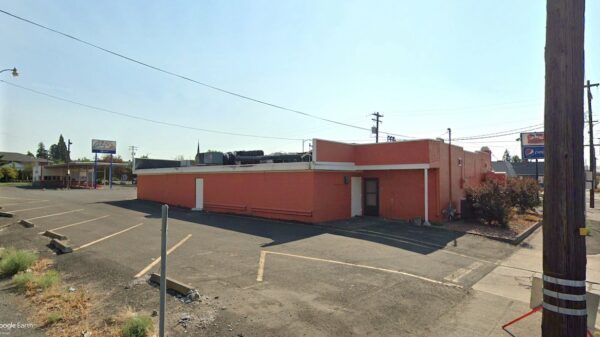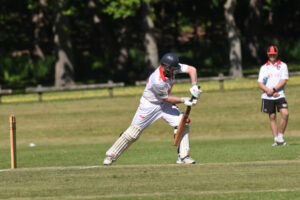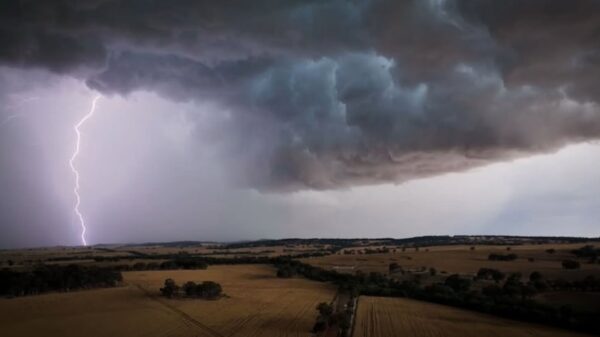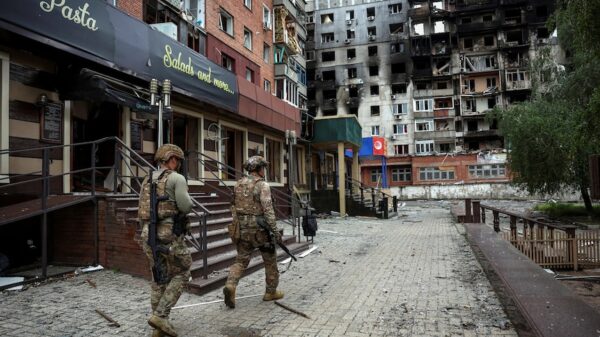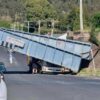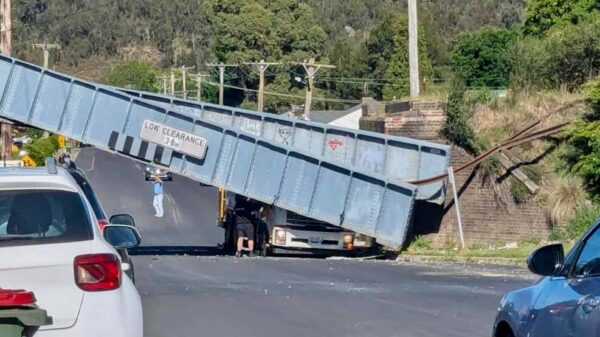Heavy rain and hail have caused significant disruption for farmers and businesses across Western Australia’s Wheatbelt region. The severe thunderstorms that struck overnight led to flooding in towns and extensive damage to crops, particularly in the southern grainbelt, as the state faces ongoing challenges during the critical grain harvest period.
According to the Bureau of Meteorology (BOM), the town of Brookton, located 130 kilometres east of Perth, experienced the highest rainfall total of 50.2 millimetres on Wednesday afternoon. Other areas, such as South Burracoppin, reported rainfall exceeding 100 millimetres. Local farmer Murray Hall described the hailstorm as “unbelievable,” noting that he found two dead sheep struck by lightning while assessing the damage to his property.
Mr. Hall highlighted the immediate priority of livestock welfare and expressed concern over crop losses. “We’ve looked at some of our canola; there is extensive damage — the seeds are all on the ground,” he said. He indicated that some areas experienced complete crop failure, with barley affected by 50 to 80 percent damage.
The BOM reported more than 250,000 lightning strikes across southern Western Australia in the 24 hours leading up to midnight on Wednesday. The majority of these strikes occurred in the Goldfields and interior regions, with around 50,000 strikes recorded in the Central Wheatbelt and Great Southern areas. Brookton Shire president Rod Wallis confirmed significant damage to local roads, prompting shire crews to work overnight for repairs. Local businesses, including a hairdresser and a hardware store, were forced to close due to extensive flood damage.
In the eastern Wheatbelt, hail and adverse weather also devastated crops near Merredin. Agronomist David Keamy reported that some areas received up to 80 millimetres of rainfall, leading many farmers to abandon entire crops. “This damage is so widespread; in the places it was bad, it was really bad,” he stated.
Warnings regarding the severe weather were issued prior to the storms, according to senior meteorologist Jess Lingard. She noted, “All the drama from the thunderstorms has now shifted into South Australia,” leaving behind a cloud cover in the South West and Great Southern regions.
The storms also impacted the town of Tammin, located 180 kilometres east of Perth. Shire chief executive Andrew Malone reported that wind gusts of up to 65 kilometres per hour caused a tree branch to snap, striking a power line and igniting a fire that reached emergency levels. The blaze destroyed sheds and unharvested crops and caused minor damage to a local meat processing business. “It could have been much worse,” Mr. Malone remarked about the fire’s impact on the town and local businesses.
Fire crews had to respond quickly to another fire in nearby Yorkrakine, which was sparked by lightning. Farmer Steve Carter from Dalwallinu reported several fires ignited by lightning on Tuesday afternoon. “The firefighters put the worst of them out, but then rain helped put others out,” he noted.
As recovery efforts continue, the agricultural community in Western Australia faces an uncertain future. The combination of severe weather and crop damage underscores the challenges that local farmers will need to navigate in the coming weeks.



















